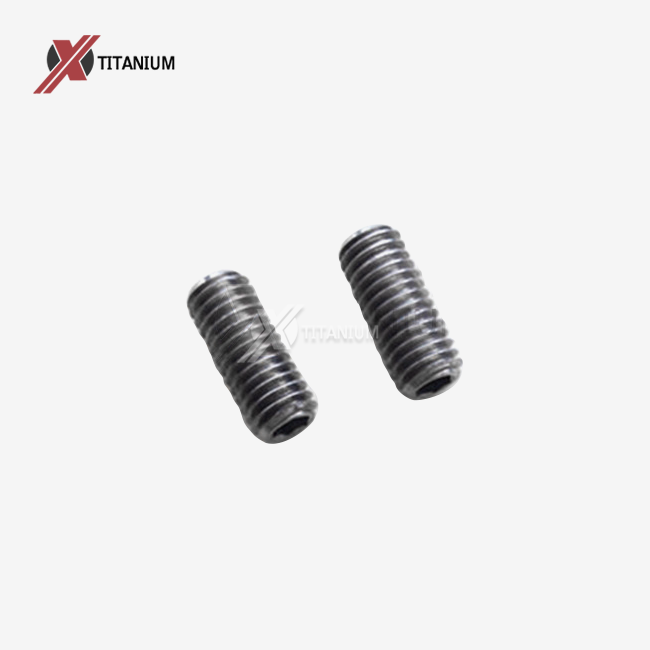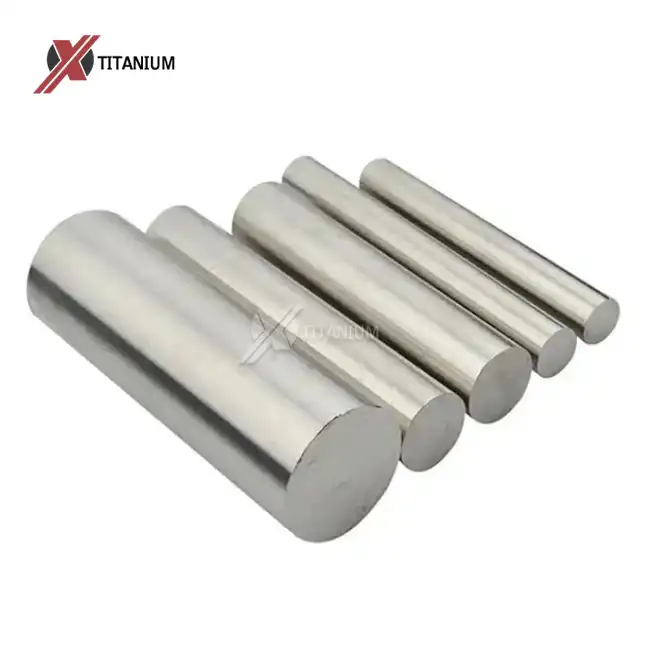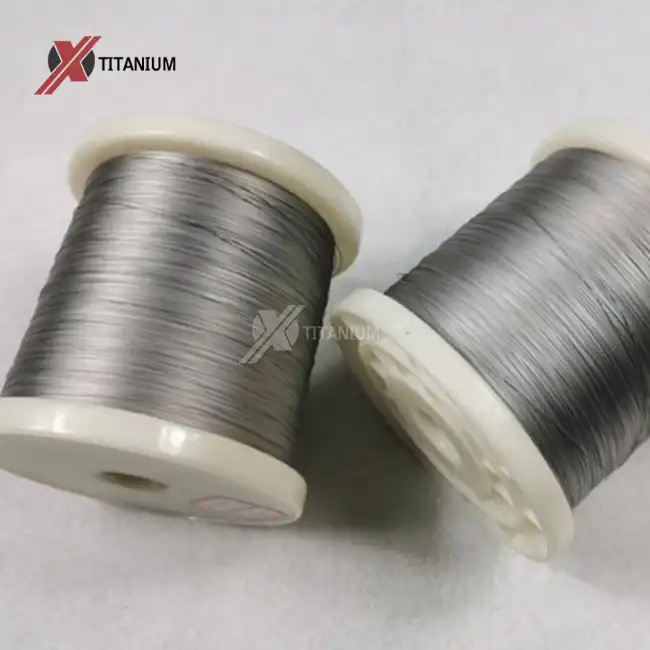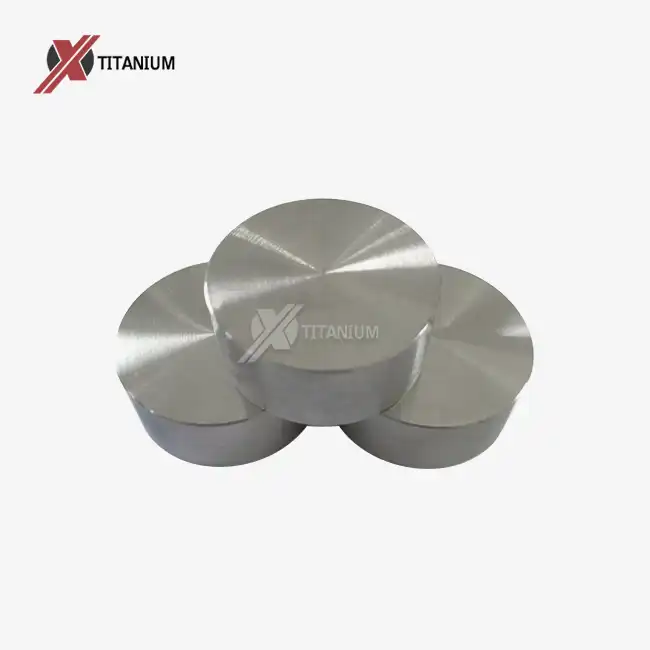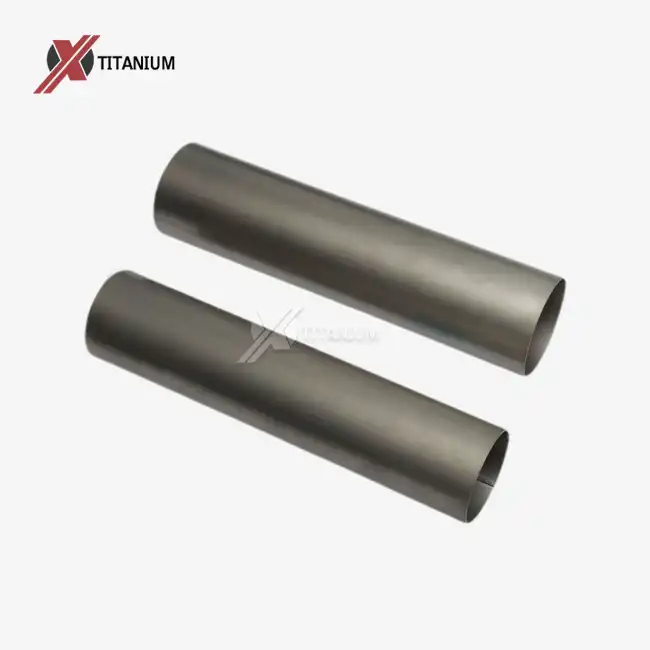Understanding Titanium Set Screws: Characteristics and Applications
What Are Titanium Set Screws?
Titanium set screws are precision fasteners designed to secure components in place within assemblies. These screws are typically headless and feature a threaded body with a drive socket on one end. What sets them apart is their composition - made from high-grade titanium alloys such as Grade 5 (Ti-6Al-4V), they offer an exceptional blend of strength, lightweight properties, and corrosion resistance.
Advantages of Titanium Set Screws
The use of titanium in set screws brings numerous benefits to various applications. Titanium set screws boast an impressive strength-to-weight ratio, making them ideal for industries where weight reduction is crucial, such as aerospace and automotive. Their inherent corrosion resistance allows them to withstand harsh environments, including exposure to saltwater and chemicals, without degradation.
Moreover, titanium's biocompatibility makes these set screws an excellent choice for medical implants and devices. The material's low thermal conductivity also proves advantageous in applications where heat transfer needs to be minimized. These properties, combined with titanium's natural durability, ensure that set screws maintain their integrity and performance over extended periods, even under challenging conditions.
Common Applications
Titanium set screws find extensive use across various industries due to their unique properties. In the aerospace sector, they're utilized in aircraft components where weight reduction is paramount without compromising strength. The marine industry benefits from their corrosion resistance in saltwater environments, making them ideal for boat fittings and underwater equipment.
In the medical field, titanium set screws are crucial in orthopedic implants and surgical instruments, leveraging the material's biocompatibility. Racing enthusiasts appreciate these screws in high-performance vehicles, where every gram counts. Additionally, titanium set screws play a vital role in chemical processing plants, withstanding corrosive substances that would quickly degrade standard steel fasteners.
Essential Tools and Preparation for Installing Titanium Set Screws
Required Tools for Installation
To ensure a proper installation of titanium set screws, having the right tools at your disposal is crucial. The primary tool you'll need is a high-quality hex key or Allen wrench that precisely fits the drive socket of your set screw. For more precise applications, a torque wrench calibrated for the specific torque requirements of your project is indispensable.
Other essential tools include a clean, lint-free cloth for cleaning components, a small brush for removing debris from threaded holes, and potentially a magnifying glass for inspecting small screws and threaded holes. If you're working with particularly stubborn set screws, a penetrating oil may be necessary to ease removal of old screws before installation of new ones.
Preparation Steps
Proper preparation is key to ensuring the longevity and effectiveness of your titanium set screw installation. Begin by thoroughly cleaning the threaded hole and the surrounding area. Use a solvent suitable for your application to remove any oil, grease, or debris that might interfere with the screw's performance.
Inspect the threaded hole for any damage or irregularities. If the threads are damaged, you may need to use a thread tap to restore them before installing the new set screw. Similarly, examine the titanium set screw itself for any defects or damage that could compromise its function.
If your application requires it, prepare a suitable thread-locking compound. Choose a product that's compatible with titanium and appropriate for the environmental conditions the screw will face. Apply the compound sparingly to avoid excess that could interfere with the screw's function or make future removal difficult.
Safety Considerations
While titanium set screws are generally safe to handle, it's important to observe proper safety protocols during installation. Wear safety glasses to protect your eyes from potential metal shavings or debris. If you're working with chemicals like cleaning solvents or thread-locking compounds, use appropriate gloves to protect your skin.
Be mindful of the torque you apply when tightening titanium set screws. Over-tightening can lead to damage of the screw or the components it's securing. This is particularly important given titanium's high strength-to-weight ratio, which can sometimes lead to underestimating the force being applied.
Step-by-Step Guide to Installing Titanium Set Screws
Proper Insertion Techniques
The process of inserting titanium set screws requires precision and care to ensure optimal performance. Start by aligning the screw with the threaded hole, ensuring it's straight to prevent cross-threading. Gently turn the screw clockwise using your fingers to get it started. This initial hand-tightening helps you feel if there's any resistance that might indicate misalignment or thread issues.
Once the screw is finger-tight, switch to the appropriate hex key or Allen wrench. Continue turning clockwise, maintaining the straight alignment. As you tighten, pay attention to the feel of the screw. A smooth, consistent resistance indicates proper threading, while sudden increases in resistance or a gritty feel could signal problems.
Achieving Proper Tightness
Determining the correct tightness for titanium set screws is crucial for their effectiveness. In many applications, the screw should be tightened until it makes firm contact with the part it's meant to secure, plus an additional quarter to half turn. However, specific applications may have different requirements.
For critical applications or where precise torque is necessary, use a calibrated torque wrench. Follow the manufacturer's specifications or engineering requirements for the correct torque value. Remember that titanium has different properties than steel, so torque specifications may differ from what you're accustomed to with other materials.
Common Pitfalls to Avoid
When installing titanium set screws, be wary of several common mistakes. Over-tightening is perhaps the most frequent issue. Due to titanium's strength, it's easy to apply more force than necessary, which can damage the screw, the threaded hole, or the components being fastened.
Another pitfall is neglecting to use thread-locking compound in applications where vibration or thermal cycling could cause the screw to loosen over time. Conversely, using too much thread-locking compound can make future removal difficult and may interfere with the screw's function.
Lastly, using the wrong size or type of hex key can damage the drive socket of the set screw, making it difficult to adjust or remove in the future. Always ensure you're using the correct tool that fits snugly in the socket.
Post-Installation Checks
After installing titanium set screws, it's important to perform a few checks to ensure proper installation. Visually inspect the installation to confirm the screw is fully seated and aligned correctly. If possible, test the security of the fastened components by applying gentle pressure or movement.
For critical applications, consider marking the position of the screw head relative to the component it's securing. This can help in future inspections to quickly identify if the screw has loosened. In some cases, you might also want to apply a tamper-evident seal or paint mark across the screw and the adjacent surface.
Remember, proper installation of titanium set screws is crucial for maintaining the integrity and performance of your assemblies. By following these guidelines and paying attention to the unique properties of titanium, you can ensure your set screws provide the superior strength, corrosion resistance, and longevity they're designed for.
Conclusion
Installing titanium set screws correctly is a crucial skill that ensures the longevity and reliability of various assemblies across multiple industries. From aerospace to medical applications, these high-performance fasteners play a vital role in maintaining structural integrity under demanding conditions. By understanding the unique properties of titanium, using the right tools, and following proper installation techniques, you can maximize the benefits of these exceptional fasteners.
Remember, the key to successful installation lies in careful preparation, precise execution, and thorough post-installation checks. Whether you're working on a high-stakes aerospace project or a marine application requiring superior corrosion resistance, proper installation of titanium set screws will contribute significantly to the overall performance and longevity of your assembly.
If you have any questions about titanium set screws or need assistance with your specific application, don't hesitate to reach out to the experts. Contact us at info@cltifastener.com or djy6580@aliyun.com for personalized guidance and top-quality titanium fastener solutions.
